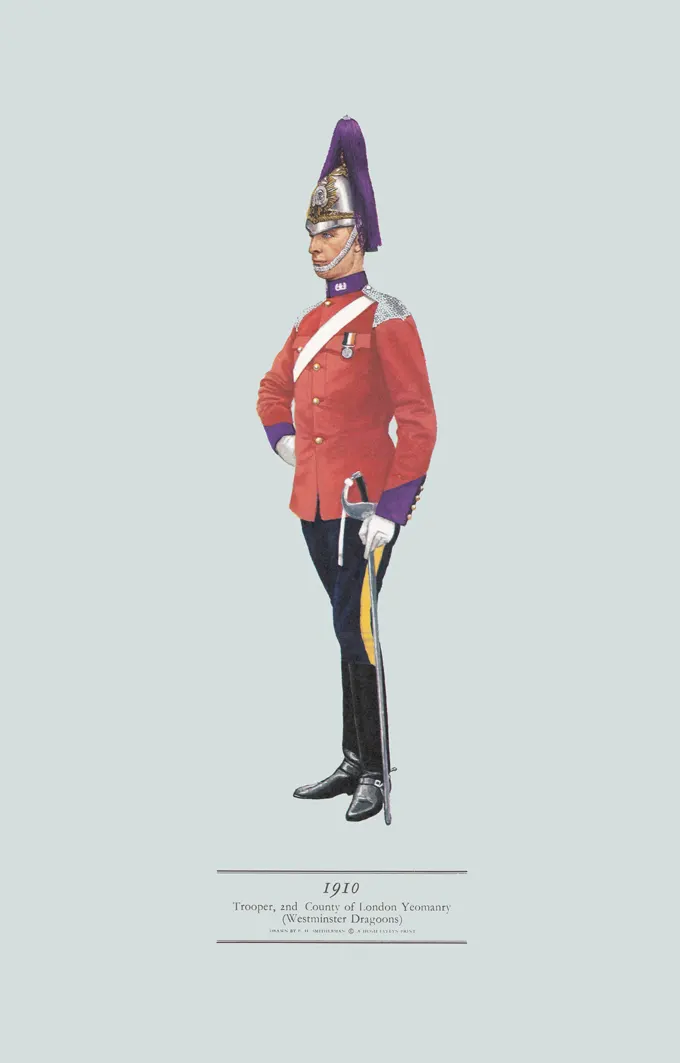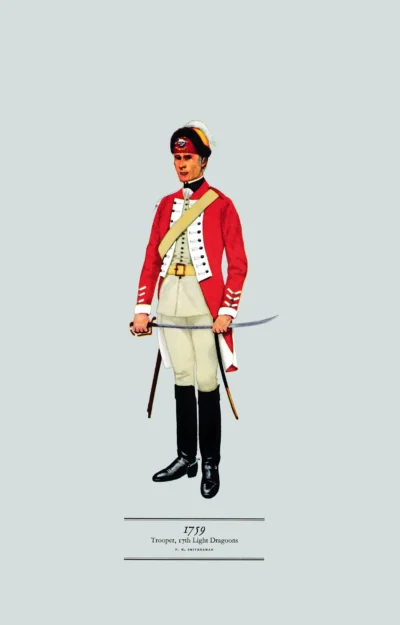Trooper, 2nd County of London Yeomanry (Westminster Dragoons), 1910
£0.00
London and Westminster Light Horse (1779), disbanded 1783, reformed 1784 renamed Westminster Volunteer Cavalry (1797) (scroll down for a more detailed Description)
Published 1967 by © Hugh Evelyn Limited; drawn by Colonel Philip Henry Smitherman (1910-1982), Royal Corps of Signals
Size: c. 24.5 x 37.5cm [9 ½ ″ x 14 ½ ″] (may vary slightly from printers’ cut 50 years ago)
Printed on on medium cardstock weighing 144 g/sm2 faced in light greyish blue (RGB c. d5dede)
Print is STANDARD size – shipping is the same for 1 to 10 prints (based on largest print size in your order) – see Shipping & Returns
Out of stock
Description
The regiment was first recruited from wealthy merchants and bankers as the London and Westminster Light Horse in 1779. Disbanded in 1783 but the regiment was reformed again the following year. The regiment was renamed the Westminster Volunteer Cavalry in 1797 and barracks were built to accommodate the regiment in Gray’s Inn Road in 1812. The regiment was disbanded again in 1829 and the barracks decommissioned in 1830.Finally The 2nd County of London Imperial Yeomanry was formed on 24 August 1901 for the Boer War and its lineage is continued today as one of the 6 squadrons of the Royal Yeomanry.
Here is a full-dress uniform adopted after the Boer war. The tunic is the fed serge frock usually worn by the regular cavalry for manoeuvres, with the shoulder chains more commonly worn with the blue serge frock. The cuffs are of a rather unconventional shape. The purple plume on the helmet was replaced by a white one in 1911.
Additional information
| Weight | 0.012 kg |
|---|---|
| Dimensions | 24 × 37 cm |




